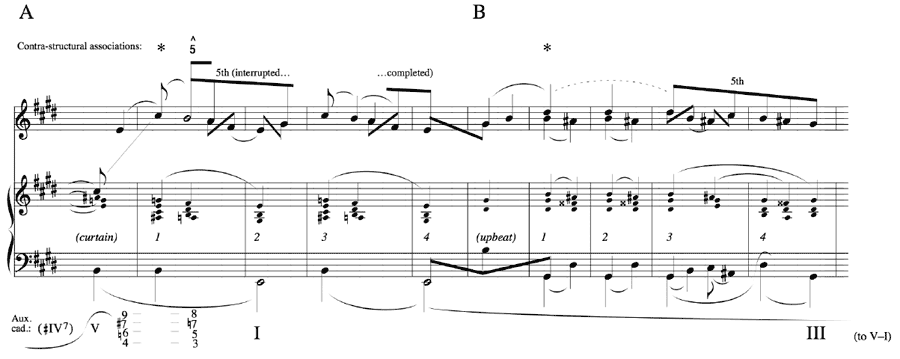
Supplementary notes:
-
Measures 1–3: The auxiliary cadence involves three harmonies, but compressed to displace the
 IV7 above the V. The effect is that of a suspended harmony, although the bass B in m. 1 is arguably an anticipation of its normative time span.
IV7 above the V. The effect is that of a suspended harmony, although the bass B in m. 1 is arguably an anticipation of its normative time span. -
Measures 2–5: The fifth progression in the upper voice is divided between two paired subphrases, in the manner of a free interruption. The double Bassbrechung becomes structural in the repetition in measures 11–5.
-
Measure 6: This free-standing upbeat measure parallels the curtain in the first bar and effectively sets apart the quotation of spoken text within the poem.

Supplementary notes:
-
Measure 16: The omission of the upbeat measure makes the recall of the spoken text sounds more emphatic, in spite of the subdued dynamics.
-
Measures 16–9: The upper voice divides into two parts, the contra-structural E reasserting its highpoint, the C
 resuming its structural role as neighbor to
resuming its structural role as neighbor to  , reinforcing the effect of a voice distant from our present reality. The neighbor is supported by a plagal motion, identified here as a lower fifth divider, a term which Schenker abandoned but which may be relevant here.
, reinforcing the effect of a voice distant from our present reality. The neighbor is supported by a plagal motion, identified here as a lower fifth divider, a term which Schenker abandoned but which may be relevant here.